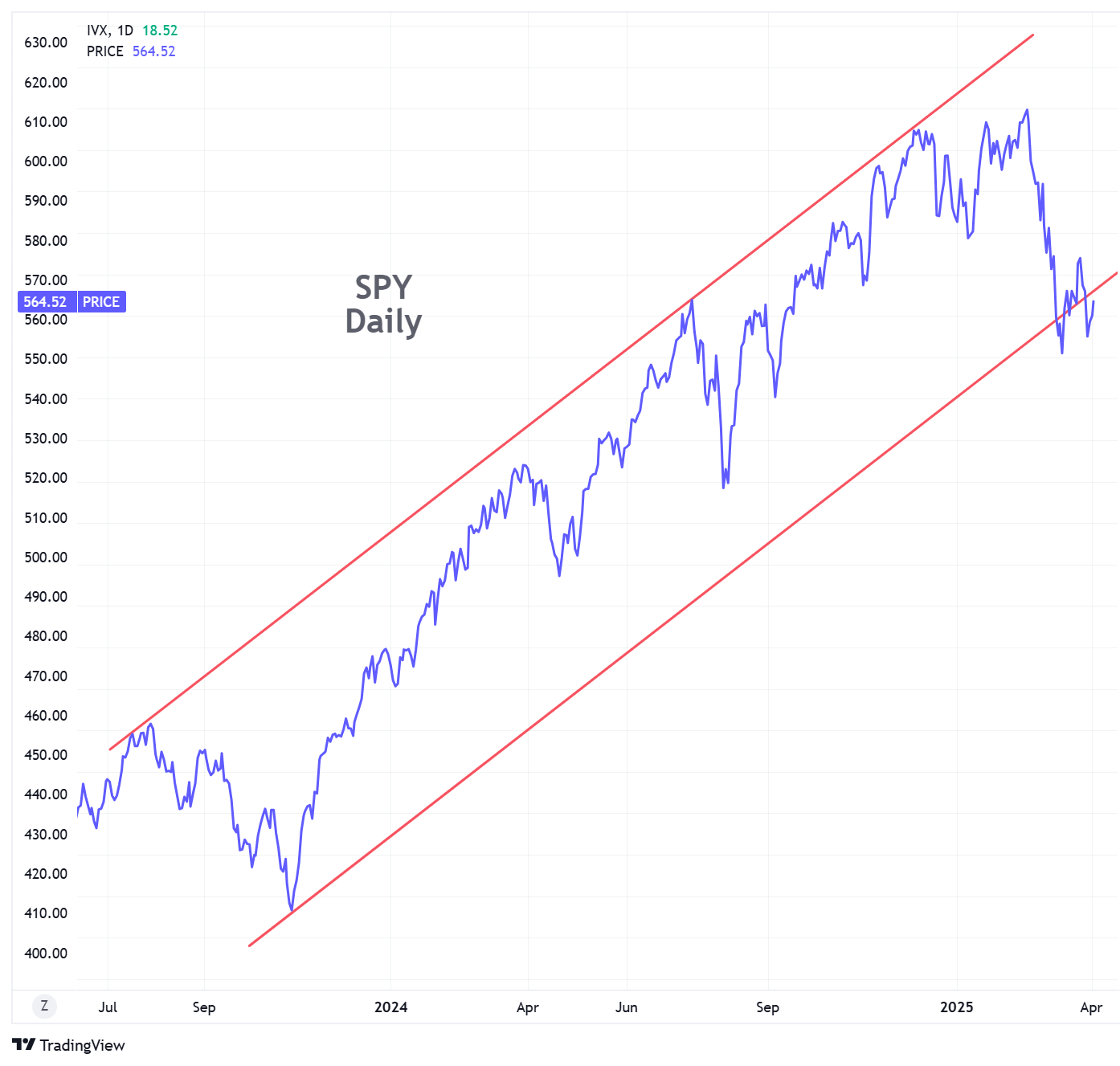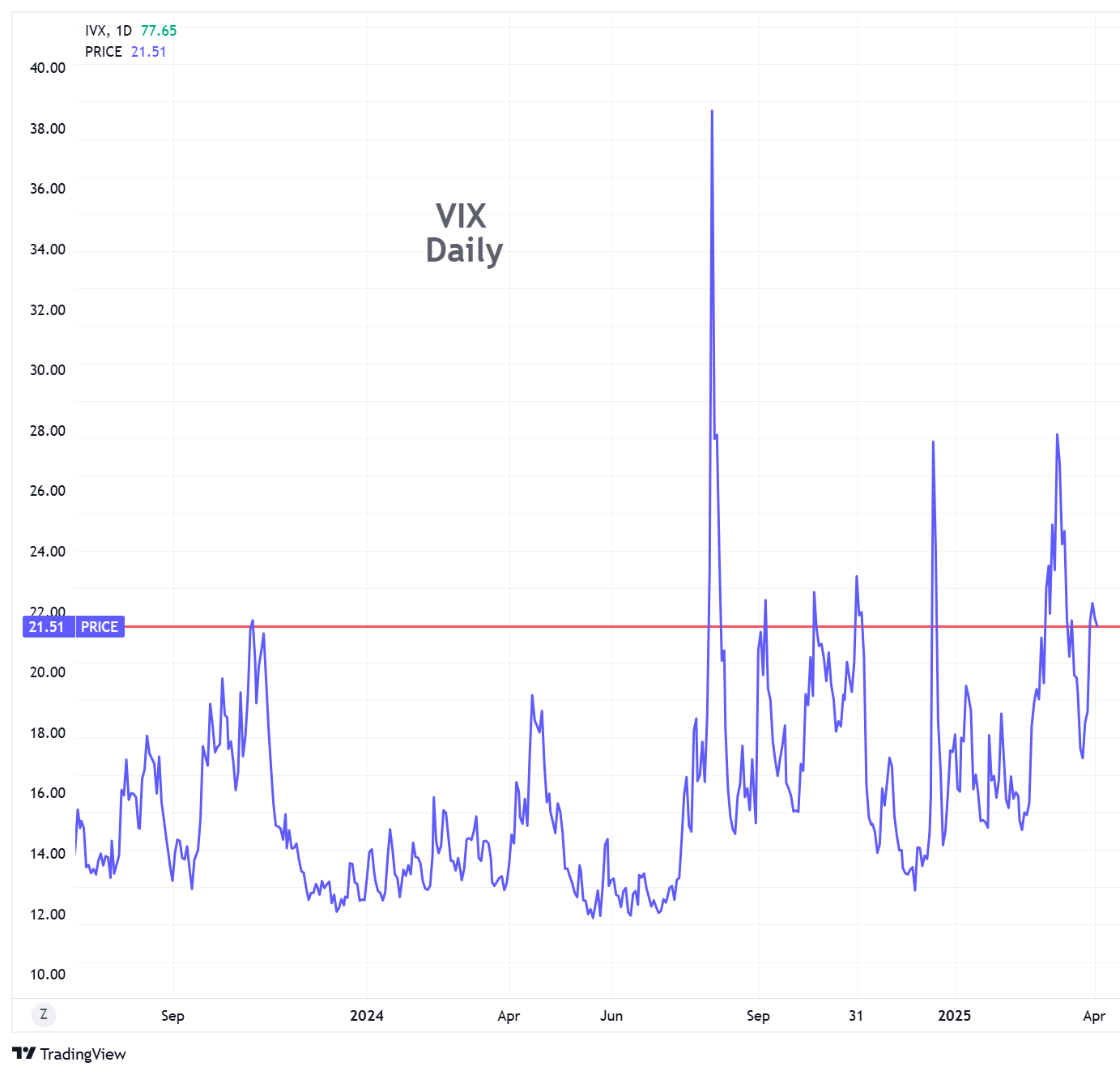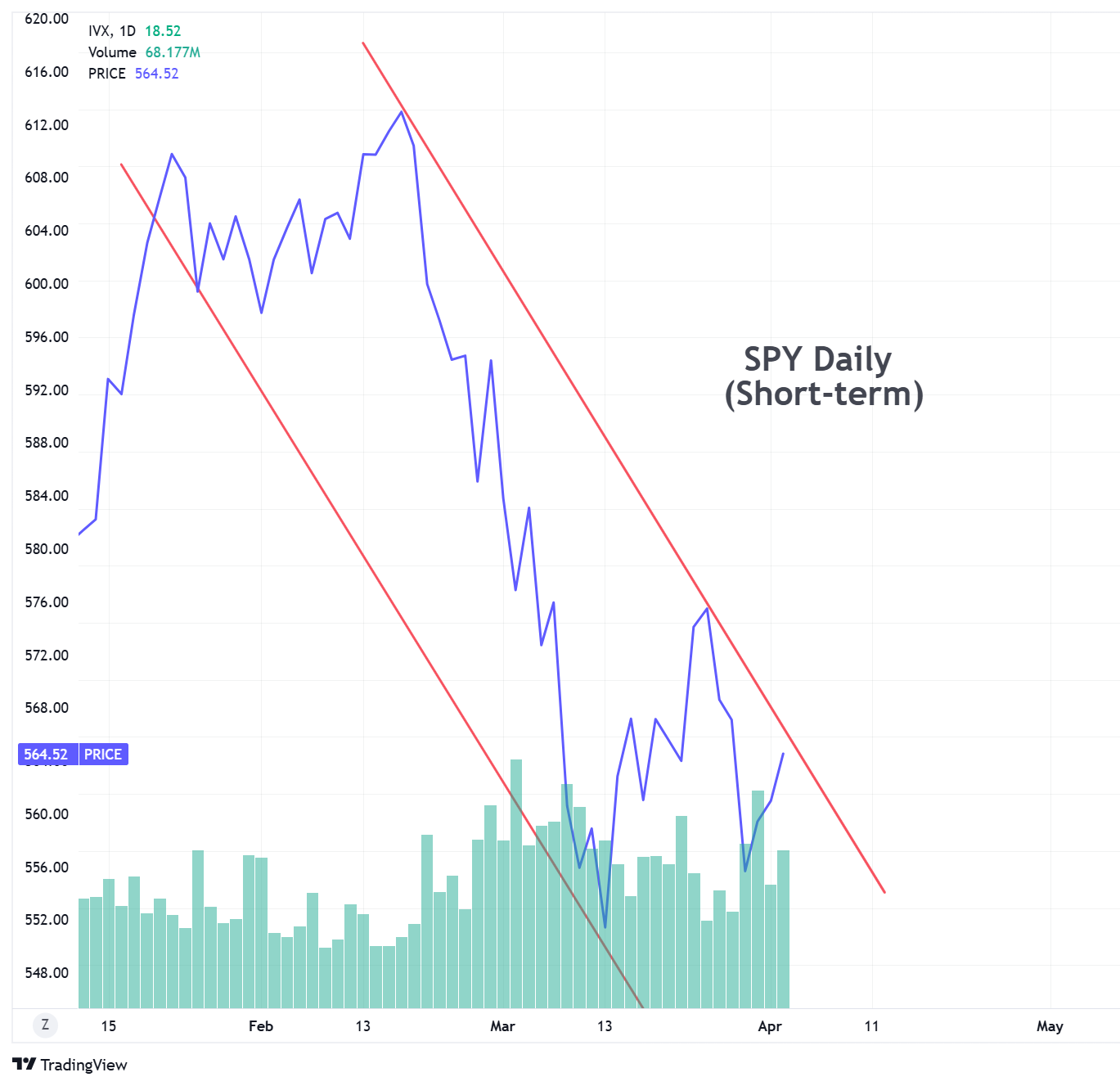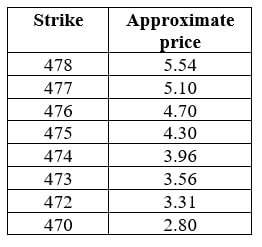Low Cost Butterflies
April 3, 2025
The Markets at a Glance


The market continues to digest its recent decline while attempting to figure out whether Trump's tariffs will present a minor amount of pain on the way to big rewards or a path down to recession. Over the past week, it has been attempting to rally somewhat but with only limited success.
On the short-term chart below, a trend channel can be drawn to show the recent action entirely contained in a downtrend since mid-February. The longer-term daily chart (above) also still shows SPY having broken the uptrend from the Fall of 2023. Thus, both charts are negative.
At the same time, VIX did drop to around 17 as the short-term decline began to stabilize but popped back up into the 20s again over the last several days.
There has not been any major economic news lately, but the pending tariffs and the uncertainties they create are wreaking havoc with many US companies and casting a pall over the market. Several key Wall Street firms have already begun lowering their estimates on the market for the rest of the year while others are saying they will reassess when they see what the tariff plan will entail.

After the close Wednesday, the tariff plan was finally announced, sending futures sharply lower. A sharp sell-off at the end of this week could set up a trading opportunity, but I'd advise caution until there is a noticeable break in the short-term downtrend above.
Meanwhile, option writing is clearly the preferred approach here while premiums are so high. I have been looking at using butterfly spreads to protect downside on certain stocks or ETFs and I am considering them also as a way to play an upward bounce with limited risk as well. Today's strategy section will discuss this further.
Strategy Talk: Using Butterfly Spreads in Volatile Markets
As I have previously mentioned, butterfly spreads are a special purpose option strategy with limited risk and high potential reward. Given the high implied volatilities in today's market and the propensity for stocks or ETFs to stage sizable moves and reversals in a given day, there are several ways in which butterflies can be used to augment other strategies.
Hedging long positions
Since the expense of long puts is especially prohibitive these days for hedging long positions, covered calls can be attractive in such an environment and can bring in enough income to offer a partial hedge against downside while still allowing some upside as well, despite being capped.
But even with higher premiums, covered call writing only partially hedges the downside of a long stock position. Adding a long put or a bear put spread can provide greater downside protection, though the costs will greatly reduce any upside potential.
Butterflies, however, can be used instead of a long put or a bear put spread to hedge the downside. They will be less expensive and can thus protect from a higher price. But the tradeoff is that the butterfly spread can reintroduce additional downside risk below the middle strike of the butterfly.
Here is a comparison of short-term hedging strategies on QQQ using mid-day Wednesday prices:
QQQ – 478.50
QQQ April 4 puts

Now let's ignore any call writes and just focus on comparing the downside protection from a put purchase, a put spread purchase, and a put butterfly.

Other strike prices can, of course, provide many more degrees of downside protection. If you wanted to protect your position down to say 470, then you should make the middle strike of your butterfly 470. That would create a 478/470/462 butterfly spread, which would cost around 1.75. Comparing that with the bear spread above that costs nearly the same amount, the butterfly would offer more protection (down to 470 rather than 474) but would start picking up double risk from 470 down to 462.
If you were putting on a protective collar using the 478 put, you would need to write a call close to that same strike in order to offset that cost. Writing a 478 or 479 call, however, offers almost no upside, so it does little beyond “freezing” your QQQ position at or near its current price. If you protect with a bear spread or butterfly spread, the cost is much lower, enabling you to offset it with a call above where the stock is trading, leaving upside potential.
Something to note about butterfly spreads is that they are affected by both time and the movement of the underlying but not in the same way as a long put by itself. Implied volatility can have an impact, but it is relatively small since you have offsetting long and short options that will both rise and fall with a change in volatility. If your butterfly is OTM, then it will exhibit time decay and some gain or loss from movement in the underlying. If it is partially ITM, you may get more sensitivity to the movement of the underlying.
These effects tend to offset one another until the spread gets very close (i.e. a few hours) to expiration. As such, you need to expect to hold the spread until very near expiration to maximize its value. But at the same time, you will incur more directional risk near expiration as well.
Butterflies can also be used to take a long position when you think a reversal upward is near.
Butterflies can give you a low-cost, low risk hedge or speculative position, but they don't behave quite like debit spreads or long options. Therefore, I recommend trying them on paper to get more comfortable with them. That will also help you decide what strikes are best to use in specific situations.
Got a question or a comment?
We're here to serve IVolatility users and we welcome your questions or feedback about the option strategies discussed in this newsletter. If there is something you would like us to address, we're always open to your suggestions. Use support@ivolatility.com.
Previous issues are located under the News tab on our website.